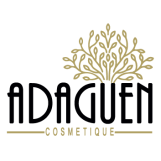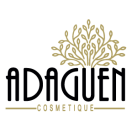The Evolution of the Cosmetics Industry in Morocco
The cosmetics industry in Morocco has undergone a significant transformation, evolving from deep-rooted, traditional beauty practices to a thriving market that captures both local and international attention. Historically, Moroccan beauty rituals were deeply intertwined with the cultural fabric of the country. Traditional ingredients such as argan oil, rosewater, and ghassoul clay have been used for centuries, renowned for their natural benefits and sustainable sourcing. These components were the cornerstone of beauty routines, passed down through generations.
Over the years, the Moroccan cosmetics market has expanded and modernized, influenced significantly by cultural elements and the introduction of international brands. The globalization of beauty standards has opened Moroccan consumers to a plethora of choices, blending traditional ingredients with modern formulations. The local market witnessed a pivotal shift in the early 2000s with the entry of international cosmetics giants, which introduced sophisticated marketing strategies and diversified product ranges.
Government policies have also played a crucial role in propelling the cosmetics industry in Morocco. Incentives for local production, export facilitation, and initiatives aimed at attracting foreign investments have created a favorable environment for the sector’s growth. The shift towards natural and organic products on a global scale has amplified the appeal of Moroccan cosmetics, which boast natural ingredients known for their efficacy and purity.
The global spotlight on Moroccan ingredients like argan oil, often referred to as “liquid gold” due to its extensive skincare benefits, rosewater for its soothing properties, and ghassoul clay for detoxification, has been instrumental in establishing Morocco’s reputation in the beauty world. These local treasures not only cater to contemporary consumer demands for natural products but also highlight the country’s rich heritage.
In conclusion, the Moroccan cosmetics industry’s evolution is a testament to its dynamic adaptation to modern trends while staying rooted in tradition. This unique blend of heritage and innovation continues to drive its growth, positioning Morocco as a notable player in the global beauty market.
“`html
Leading Cosmetics Brands and Their Impact
The Moroccan cosmetics market has witnessed remarkable growth, attributed to a mix of local and international brands carving out significant niches. Among the standout local brands, there’s Yves Rocher and Amira Nature with rich histories rooted in the use of indigenous ingredients like argan oil, rosewater, and ghassoul clay. These brands have capitalized on Morocco’s natural resources and traditional beauty rituals, transforming them into high-quality, sustainable products. By emphasizing natural ingredients and ethical sourcing, these companies have resonated well with environmentally-conscious consumers both within Morocco and internationally.
Yves Rocher, a pioneer in botanical beauty, combines scientific research with nature’s bounties to produce eco-friendly cosmetics. The brand’s commitment to sustainability extends beyond its products to its packaging, reducing waste and promoting recycling initiatives, which have significantly boosted its reputation. Amira Nature, on the other hand, excels in showcasing Morocco’s rich cultural heritage through its product lines. By utilizing time-tested beauty regimens and packaging them in modern aesthetics, it bridges traditional and contemporary sensibilities, appealing to a broad demographic.
International brands like L’Oreal and Estée Lauder have also established a strong foothold in Morocco, introducing diverse product ranges that cater to the local population’s varying skincare and beauty needs. These global giants employ comprehensive marketing strategies, leveraging social media platforms, celebrity endorsements, and localized campaigns to engage Moroccan consumers on multiple levels. Their ability to adapt to local tastes and preferences has enabled them to thrive in the competitive Moroccan market.
The impact of these cosmetics brands on the local economy has been profound. They have created numerous employment opportunities, fostering a skilled workforce in areas such as product development, marketing, and retail. Additionally, the success of these brands has positioned Morocco as a significant player in the global cosmetics industry, attracting foreign investments and trade partnerships.
However, the Moroccan cosmetics market isn’t without its challenges. Brands face fierce competition, fluctuating raw material prices, and the need to continually innovate to meet evolving consumer preferences. Despite these hurdles, the focus on sustainable and natural products offers a competitive edge, appealing to both local and international markets.
“`

